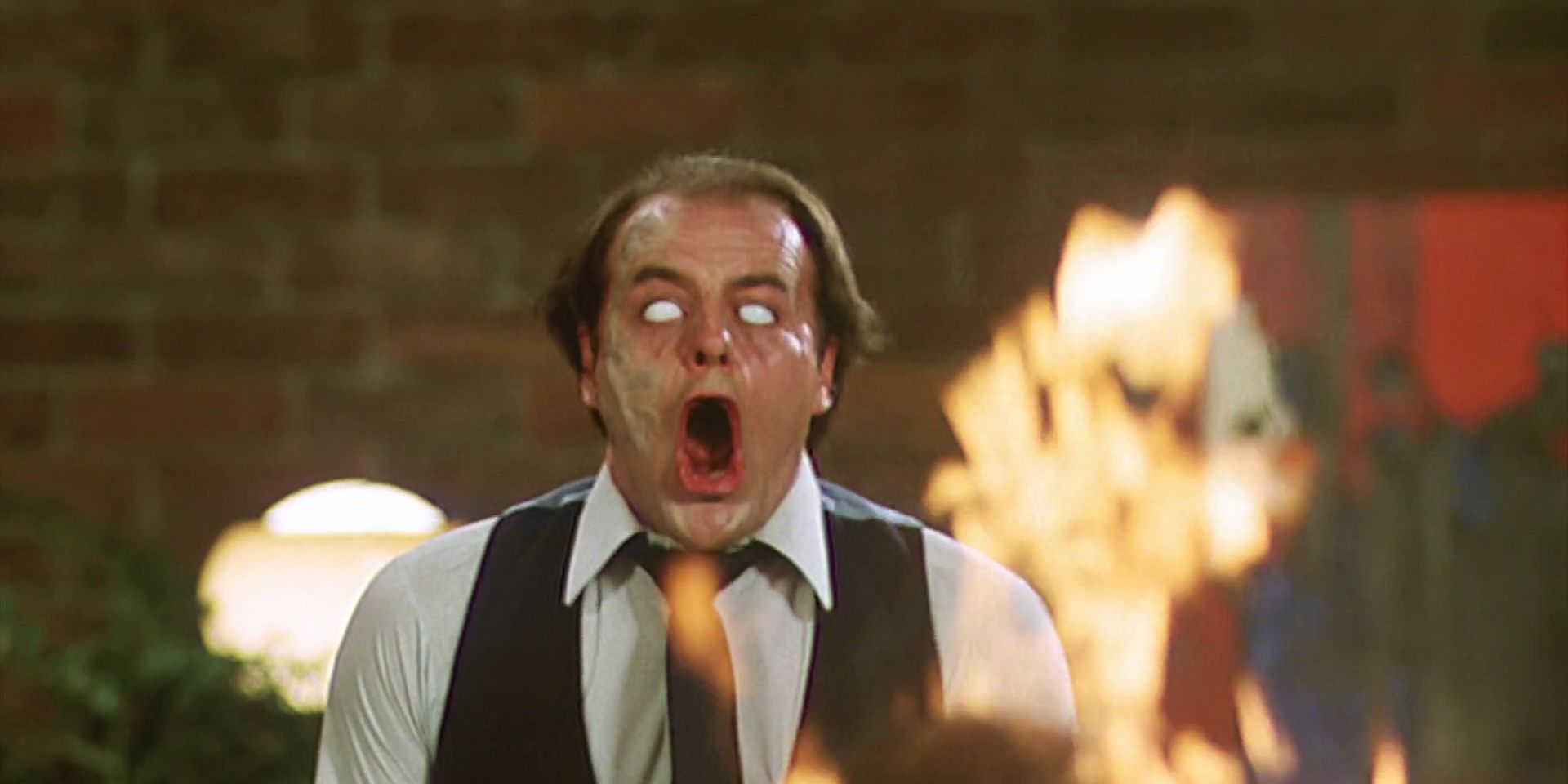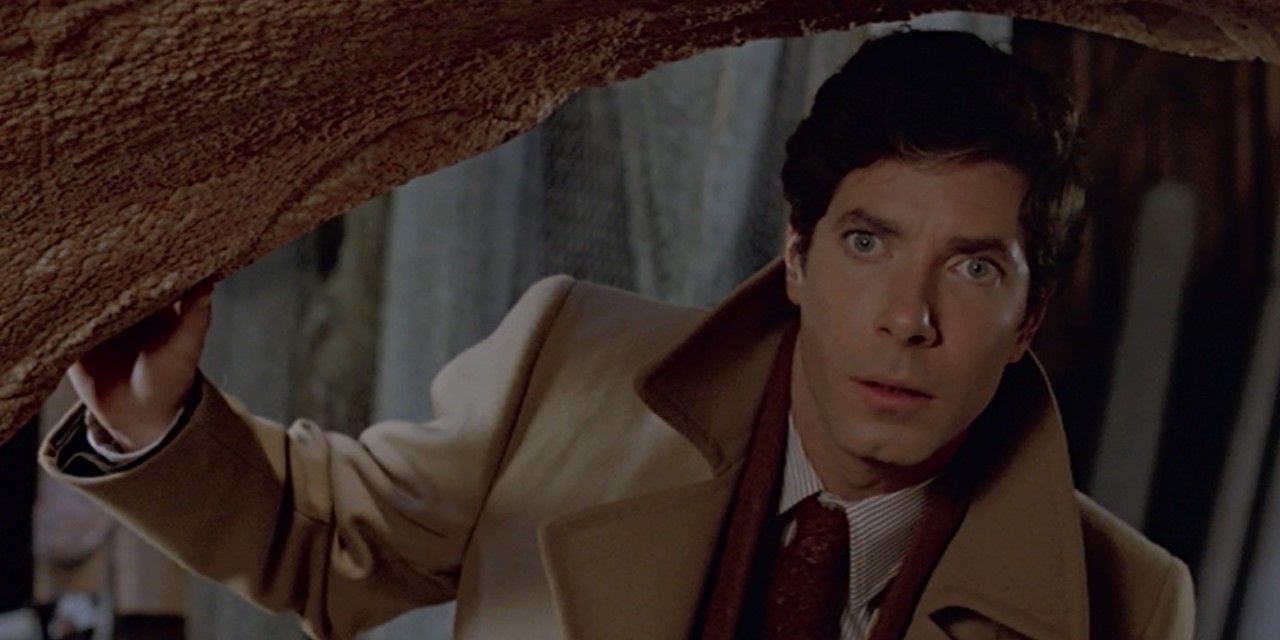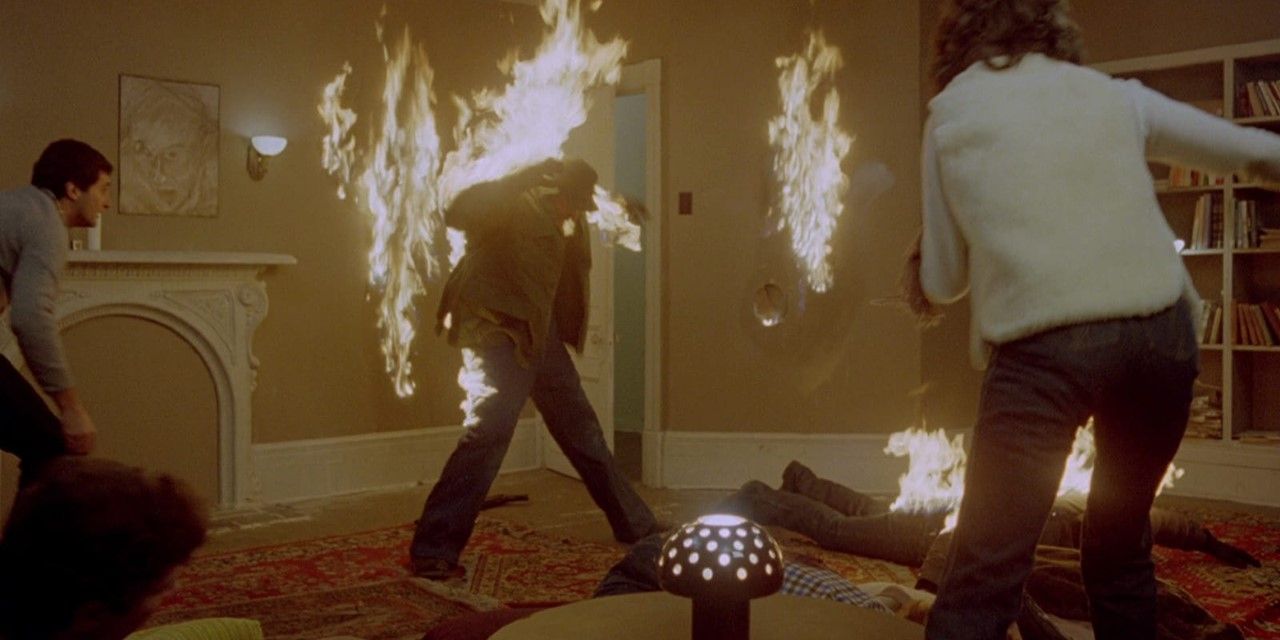David Cronenberg's 1981 body horror film Scanners tells the story of those who are born with the special ability to "scan" the nervous systems of other people, gaining knowledge of their thoughts and control over their bodies. There are two Scanner factions in the movie: one side fighting for global domination at any cost, and the other simply struggling to survive their enemy's ruthless attacks. In the middle of all this is social outcast Cameron Vale -- portrayed with a hypnotizing allure by Stephen Lack -- who learns that he too possesses this strange power and must soon play his part in the ongoing conflict.
This Canadian-made film broke new ground for its director, becoming a financial success big enough to go up against Hollywood. Made on what today would be considered a minuscule budget -- roughly $4 million dollars -- it went on to gross over $14 million dollars in the U.S. and Canada, making way for two sequels and two spinoffs. None of these subsequent films benefited from Cronenberg's input and, perhaps, as a result, failed to live up to the ingenuity and thrills of the original. Since its release, Scanners has developed a strong cult following, has been repackaged and reintroduced to the world as part of the Criterion Collection, and has aged gracefully in a world where effects are almost exclusively done with the help of a computer.
The early part of Cronenberg's career has been cited as the origin point for the subgenre of body horror, which employs meticulously crafted special effects (like prosthetics, animatronics and even pyrotechnics) to create a visceral, gruesome moviegoing experience. This kind of movie making is an integral part of Scanners, with various characters going through bloody, physically-deforming scenarios. There is also a gory battle between the agents of good and evil at the end -- with the actors having to wear special makeup and prosthetics and the production crew having to employ a fake body double of one of the stars -- that still holds up today. This kind of craftsmanship is also on full display in a similar film released a year later, John Carpenter's The Thing. Scanners, with its share of shocking moments, refuses to rest on its masterful effects and its gross-out surprises. What Scanners does, with a pulp magazine simplicity, is combine a variety of styles and ideas into one cohesive whole.
As mentioned, Vale is an Everyman who is thrown into a bona fide world of espionage, starting his arc in the employment of a weird but gifted scientist with special insight into scanners, played to icy perfection by Patrick McGoohan. The action scenes are a blend of gutsy, street-level scenes reminiscent of The French Connection, with other sequences leaning heavily into the sci-fi aspects of the story (one character uses his telepathic power to psychically paralyze a gang of thugs before throwing them around a room in every direction). With the body horror element topping off this stylistic blend of a movie, Cronenberg achieves a special balance whereas, fantastic as the story is, there is a grounded sense of danger and peril -- sold to audiences, in part, by the talented actors.
Another gift that Scanners presents to the world of horror is its synthesis of a variety of complex philosophical themes (not necessarily a new thing in horror fiction, but Cronenberg does this without bogging down the film's brisk pace or crisp characterizations). At its core, the story is a deconstruction of the idea of self. One minor but key character in the story is an avant-garde artist who was also born a scanner. His art, which can be seen on display in one scene, is a physical representation of having to contend with multiple personalities and inner realities while essentially remaining one individual. Vale himself spends a good share of his time trying to come to terms with his power, trying to learn how to control its adverse effects (at one point early on in the film, he almost goes crazy when he's unable to shut off an increasingly loud influx of strangers' thoughts) and how to get it to do what he wants. By the end of the movie, Vale transcends in more ways than one through his mastery of scanning.
A hero isn't really a hero without a proper villain, and the main threat in Scanners comes in the shape of Darryl Revok, played with a slyly subdued ferocity by Michael Ironside. Revok is a shrewd businessman and mastermind in charge of an army of mind-wiped goons, and he wants nothing short of global domination. He believes deep down in his being that he and his scanner legions deserve the world. The final confrontation between him and Vale is a visual and technological marvel, but it presents the viewer with an ambiguous ending that leaves the conversation around personal identity open long after the credits roll.
All these reasons, which are made to work to an incredibly smooth and entertaining degree, solidify Scanners in a league of its own. When placed alongside other body horror movies, from Hellraiser (1987) and its subsequent sequels, The Blob (1988) or even Kevin Smith's Tusk from 2014, it becomes clear how Scanners helped pave the way for a new kind of movie making. To borrow a phrase from one of its theatrical posters, Scanners is truly a unique, mind-blowing experience.



